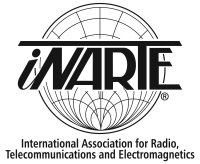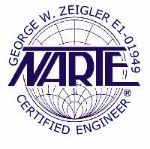Lightning and EMC Solutions for the Val– Lille Subway Using of the Zero Method
ZM Approach for EMC and Solutions for the Val– Lille Subway
By
1Daniel Soleil, 2Jean-Marc Destailleur, 3Alain Alcaras
1Bureau d’Etudes CEMS, 801 Route d’Eyguieres
13560 Senas (F).Tél : (+33) (0)4 90 57 28 14
Fax : (+33) (0)4 90 57 25 12 –
e-mail : daniel.soleil@wanadoo.fr - http://pro.wanadoo.fr/geniecem
2Transpole, 59 701 – Marcq en Barœul
Tél : (+33) (0)3 20 40 40 17- Fax : (+33) (0)3 20 90 57 25 12
e-mail : y.floquet@transpole.fr
3Thales Communications, 92-Colombes
Tél : (+33) (0)1 41 30 30 71- Fax : (+33) (0)1 41 30 24 30,
e-mail : alain.alcaras@fr.thalesgroup.com
Abstract: This paper presents some considerations made about the application of a new EMC concept on the electromagnetic compatibility studies and protections. This concept specifically adapted for large and complex systems is called the “zero method”. This method allows TRANSPOLE to find quickly economic and technical good solutions against electromagnetic interferences localized inside the VAL-Lille subway. The efficiency of these solutions is confirmed along ten years of operation.
Key words: VAL, Electromagnetic Compatibility System, Zero Method, Common and Differential mode.
1. VAL-Lille subway
VAL is a compact and sophisticated vehicle, in which we can find in close location:
- Power electronics of the variable speed motorization and auxiliary power sources
- Circuits of automatisms treating the data processing for command, safety and transmission.
Vehicles 64 and 65 frequently presented momentary functional anomalies which are corrected by specific software. Their lack of operational safety made them inapt for the exploitation.
By many experiments, it is recognized that the majority of these anomalies are due to the disturbances of the information emitted or received in the processors [1].
The aim of System CEM protection is to reach “Zero default ", and to define the maintaining procedures in order to ensure the perennially of the solution.
1.1 French standards for people and facilities protection [2]
- NF C 15-100 is applied to the construction of low voltage installations, concerning in particular the electromagnetic compatibility, the equipotentiality of the ground and earth networks
- Practical realization [3] of ground network Standards NFC 13-100, NFC 15-100
- This equipotential network must make it possible to ensure simultaneously
- The people safety.
- The power installations protection.
- The sensitive equipments protection.
1.2 Sensitive equipments protection
The available documents are French standards, regulations and guides: EN 50 121, EZ 5000 (RATP) CEI 801 (Immunity).
The protection is essentially reached by maintaining a good «ground potential ». The aim of the studies carried out was to apply the various techniques indicated in these documents, by preserving especially the quality of this ground reference.
1.3 State of the art [4] on EMC system
The field of the systems Electromagnetic Compatibility is still at the stage of the studies and the project standards, even at the international level. This research is based on tests, metrology and complex coupling calculations. Among the studied systems, aeronautics, the nuclear power and the weapon systems are the first supports, in particular concerning the lightning protection.
2. “Zero method”, an experimental approach for EMC System
2.1 Research field
The Zero Method [5] is a research orientation connected to the other common research, supported by a specific metrology on the field and a simpler access, reserved to the industrial facilities, practical and economic, matched to non-specialists of theoretical electromagnetism, who can't use heavy means of measurement and calculations.
The Zero Method don't need to stimulate system circuits, it uses the existing electromagnetic environment.
This method is the subject of many papers [6] and international communications.
2. 2- Zero Method Concept (figure 1.)
This concept is based on an obvious fact that a reference potential (Ground, 0, Battery, Neutral and other potentials) remain a reference only if no HF current (usually from 10 kHz to 10 MHz) circulates in its conductors, and that there are not HF voltage between different reference potentials, whenever it occurs.
This concept can be extended to greater frequencies for other applications.
Figure 1: The Zero Method wants i = 0 & v = 0
The reference potentials are usually the following: ground, earth, 0 electronics, and power with D.C. current, power with AC current, communication links.
2.3 Feedback experience on significant sites
In practice, it is recognized that the “Zero” are ideal and non-essential for informatics and communication systems inside sensitive installations of former technologies (tolerance to the signal-to-noise ratio).
The graph hereafter figure 2. shows the experimental situations most frequently met.
Figure 2: The “Zero voltage” in practice
When 1 Vp is measured between references, it's very correct.
The current limit is calculated easily considering approximately an inductance 1 µH per meter of reference conductors. For example, 1 Vp gives a few hundreds of mAp for a conductor of with the length is a few tens of meters, concerning the usual frequencies.
Let us recall that for the very low levels (towards 0), frequencies and wave forms are not significant parameters. Whereas at the high levels, these parameters become important and require particular analyses.
The zero method is coherent with the EMC standardizations for equipment and unit systems, and for facilities and people safety. It helps to make the good choices in presence of apparent incompatible solutions.
Then, the zero method application involves "Zero failure” for the exploitation. This new concept has been experimented with successful for many others critical applications (strongly disturbed system) and lightning protection: hydraulic and nuclear power plants, pipe stations and refineries, laboratories, hospitals….
This method is especially beneficial to electricians, who are mostly in demand and enables them to solve this current problem.
3. EMC analyse of the system
3.1 Power electronics and motorization
Engines (figure 3.) are fed by a 1500 Hz converter which delivers a smoothed D.C. current, and which can be reversed for the recuperation of energy when braking.
Energy for the engines is provided by two 300 Hz converters which power is approximately 500 kW each one.
Figure 3: Power supply for the motors
3.2 Auxiliary power sources
Two electronic bays located in end of PA and HR vehicle contain the automatisms processed by microprocessors.
Other cells of processing or protection are laid out into trunks distributed in the two vehicles.
Most of these various circuits are fed in auxiliary 5 V numerical voltages, 12 to 15 V analogical etc....
These auxiliary voltages (figure 4.) are delivered by "card" converters (cutting type, functioning at ten kHz).
Figure 4: Auxiliaires power supplies
3.3 Typical levels of electromagnetic disturbances
Disturbance measurements between the frames of the racks and ground show voltages always higher than 5 V and very often higher than 10 V.
These voltages appear in Common Mode in sensitive wiring (figure 5.).
3.4 Common Mode and Differential Mode
The schematic figure which follows summarizes the various situations usually met. We can see:
- The two case of the vehicle with the mass link
- The simplified boxes working with the motorization current
- The simplified boxes working with sensitive information.
Figure 5: Common Mode and Differential Mode
The Zero Method indicates that for the safety of the system, the equipotentiality characteristic V = 0 will be reached only if I = 0.
4. Common Mode to Differential Mode transfer
4.1 High-Frequency Band (HF)
The presence of HF disturbances on a sensitive link is due generally to the common mode (CM) coupling, followed by the transfer from this CM to differential mode (DM).
4.2 Three ways to decrease the disturbances
Thus, the disturbances level can be decreased in reducing:
- CM voltages (Zero Method)
- CM coupling on the link (separation)
- Transfer CM → DM (electric insulation, shielding).
In our case, this transfer is characterized by "the CM electric insulation" which is generally controlled and efficient at low frequencies (LF) and at the functional frequencies. In HF band, the insulation of the CM is more difficult to carry out, because it is due mainly to asymmetrical CM impedances.
4.3 CM-DM transfer, asymmetrical impedances
These CM impedances depend on many geometrical and electric parameters. The geometrical parameters are related to the position of the link conductors compared to the conducting elements surrounding.
The electric parameters are related to the HF parasitic behaviours of the end loads (parasitic capacitances), these behaviours being able to be revealed partly by weak leakage (R, C) of the functional current.
These parameters naturally have values different for each conductor of the sensitive link, which creates asymmetry of impedances. These values are random and are thus not controlled. Moreover, for technical and practical reasons, these parameters cannot be modified efficiently.
5. Solutions
5.1 Solutions for decreasing sources of CM mode
Several ways were opened during the study:
- Power filters improvements
- Signal filters improvements
- Additional wires to change the paths of parasitic currents
The aim is to satisfy precisely the Zero Method criteria V = 0 and I = 0 into the sensitive systems.
5.2 Applied solution by Transpole
The solutions finalized by Transpole are based on the decreasing of CM-DM transfer:
- Reduction of some isolation defaults
- Decreasing of the ground connections impedances
- Increasing of separation between some significant wires.
Also, these solutions lead to satisfy nearly the Zero Method criteria V = 0 and I = 0 into the sensitive systems.
6. Conclusions
6.1 Electromagnetic disturbance sources
The disturbances which involve faulty operations are caused by the presence of HF voltages in common mode. Their origin comes from the fast switches of power (GTO, cuttings etc).
The disturbances reduction in source level implies industrial and regulation modifications, sometimes with bad consequences. This technique could not be used here.
6.2 Reduction of the electromagnetic disturbance effects [7].
The electromagnetic disturbance voltages appear in Common Mode in sensitive wiring.
The reduction of the effects of the Common Mode requires lighter solutions, associated to a specific maintaining. This maintaining is based on the improvement of electrical insulations and of wiring arrangements.
This solution was employed successfully in the faulty vehicles (64 and 65) which have found their normal exploitation during last 10 years.
6.3 Maintaining of the « Electromagnetic Quality »
It seems like the maintaining of insulation for exploitation and people safety.
The checking measurements of this " Electromagnetic Quality” is done:
- Between conductors and ground on the energy sources level,
- Between conductors and ground on the boxes level containing divisions of energy sources,
- Between the 0 V reference and the metal frames on the sensitive equipments.
This simple and limited measurements derive from one of the many applications of the Method of Zero, the aim is to give a realistic picture of the whole of the disturbance levels, which are to be specifically analyzed when incidents.
Bibliography
[1] C. Carel, C. Girard, “Maîtrise de l’impact d’environnements électromagnétiques sur les systèmes”, Revue de l’Electricité et de l’Electronique,N°1, 2002.
[2] NFC 13-100 - NFC 15-10 - NFC 17-100 - NFC 17-102
[3] E. Montandon "Influence de la mise à la terre et du câblage pour la CEM."Compatibilité Electromagnétique - Presses Polytechniques Romandes, 2° Edition 1985, pp 315 to 323.
[4] Ouvrage collectif (Coordinateur: B. Higel), “Maîtrise de la CEM: Technologies, Réglementation, Normes”, Collection Référentiels Dunod, Paris, 1998.
[5] D. Soleil, J. M. Badier, M. Lemesle, “Zero solution for shielding and electrical protection in a unit of electroencephalographic recording”, 14th. IEEE Int. Conf. on Innovations in Biomedical Engineering in the Year of the European Unified Market, Paris, pp. 1134-1135, October 1992.
[6] International Conference on Lightning and Static Electricity (ICOLSE) held at the Aerospace Congress and Exhibition (ACE) in Seattle, Washington, USA on September, 2001 Co-authors Daniel Soleil - Alain Alcaras – Thales Communications – Colombes : Lightning protection - Experimental approach for large sensitive systems – example of a nuclear power plant.
[7] V. Gobin & G. Labaune. "Calcul et mesure de l'efficacité de blindage des matériaux composites." Ann. Télécomun., 43, "n° 11-12 - 1988.
-o-o-o-
ETTC 05
(Electromagnetic Compatibility)
held in Toulouse – Palais des Congres on 7-8-9 June, 2005.
Biographie des auteurs
Daniel Soleil, né en 1942, est Ingénieur Electronicien de l’ESEO-Angers. Il est consultant en protection contre la foudre et les parasitages depuis 1995.
Son début de carrière s’est déroulé principalement dans la conception d’équipements de mesure et de test en HF chez FERISOL et la construction d’Onduleurs déparasités chez ALSTOM. Par ailleurs, quelques unes de ses recherches sur les parasitages électromagnétiques ont été financées par le Ministère de la Recherche et le Ministère de la Défense.
Depuis 1995, son expérience de terrain l'a amené à développer et à promouvoir une méthode CEM système appelée “Méthode de Zéro”. Sa simplicité la rend est accessible aux non-spécialistes de CEM et la rend candidate aux procédures normatives.
Jean-Marc Destailleur retraité maintenant a été responsable du Service Maintenance du VAL à Lille.
Alain Alcaras, né en 1970, est titulaire d'un DESS de communication hyperfréquence de l'Université de Limoges (1993). Il est ingénieur de recherche et développement dans le domaine du durcissement électromagnétique à THALES Communications depuis 1995.
Son activité a été centrée sur les études et développement de protections de systèmes militaires stratégiques et tactiques contre l’IEMN, la Foudre et les Champs forts.
Actuellement, il étend ses compétences dans le cadre d’études amonts et d’étude programme à la CEM système et au TEMPEST système.
Membre de la SEE, il a été animateur du cercle 44.30 de la SEE "Méthodologie de protection Foudre" de 2000 à 2004. Ses travaux ont contribué à la réalisation du "Guide de la protection contre les effets de la Foudre" réalisé en collaboration UTE / SEE.





